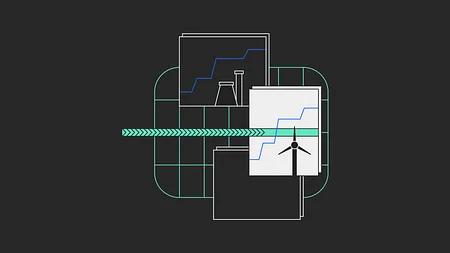How to create a culturally driven brand

This December 2020 cover of The New Yorker has been praised for perfectly capturing the zeitgeist of the time. Of the completely bizarre year we didn’t see coming.
The illustrator draws on the mundane everyday to create an image that resonates so well with the magazine’s varied readers.
This is a great example of reading culture and reflecting it back again in another cultural media form.
But what do we actually mean by culture?
Culture isn’t just about ballet, Mozart and foreign holidays
It also covers movements, like Black Lives Matter and Extinction Rebellion, that reflect culture shifts and changes that might be bubbling under the surface. And we can’t forget popular culture, from Gogglebox to the Kardashians and TikTok, which is all too often dismissed as ‘lowbrow’.
Cultural phenomena exist everywhere. It isn't confined to museums and dusty book shelves: it’s on our phones, in our wardrobes and in our rubbish bins. It's in our language; in our ‘deep meaningful conversations’ and in our petty gossip. Culture is:
Learned - We are socialised and educated into it and by it
Shared - It unites us in groups and communities
Symbolic - It gives meaning to the often meaninglessness of life and affects how we communicate
Holistic - It’s a blueprint for living and codifying how we respond to situations
Integrated - It’s a system of institutions working together
Consider this cultural lens when you’re researching what your customers want to achieve. What progress do they hope to make? How can you help to shape that beyond the laundry list of features and functionality within your products?
Because that’s exactly what we have the power to do.
Is your brand culturally relevant and responsible?
Culture is powerful! We’re influenced by everything around us, from the media we consume to the people we’re friends with and the songs we listen to. Yet, cultural research is often dismissed as being too fluffy to deserve a seat in the boardroom.
What's important here is how culture influences the choices we make. It informs the stories we hear and what we decide to share or withhold. Brands have a platform and the power to shape culture. With that comes a responsibility in how they do it.
What do you already have the power to change about the world, a community or a behaviour?
Pausing to reflect on the following statement has triggered some really interesting conversations with our clients:
“If your proposition never came to launch, what progress would society and culture miss out on?”
This can help you to differentiate your product in a sea of sameness. It’s what underpins every brand: your Story to be Told beyond your Job to be Done.
Hopefully you’ve already identified what your customer wants to achieve (their Jobs to be Done) and you’ve built your product around helpful features to allow them to reach their goals. This has set you on the path to success, but you won’t win just by solving a customer problem. You need to tell a compelling and authentic story both inside and outside your organisation. Doing this well requires you to decode the cultural trends your customers experience every day – the zeitgeist or ‘spirit of the times’.
It’s never just about coffee. It’s about the art of living.
Ana Andjelic - The Business of Aspiration
Our challenge to those who dismiss building culture into their strategy is that nothing is too trivial if it inspires your customers. It’s not just about a credit card or a mortgage. It’s about what these things enable a consumer to do (like buy a new car or their first home). And brands play a role in the art of living well, as Ana Andjelic puts it so well in her book The Business of Aspiration.
Taking this seriously is essential if you want to move beyond the 1%. We talk a lot about financial services only being 1% finished, but how do we appeal to the other 99%?
This becomes especially interesting as we think more and more about embedded finance. What worlds, contexts and culture is finance really being embedded into?
Navigating culture is neither an art nor a science
It’s all about reading between the lines:
What’s most telling isn’t always told; it’s in the subtle untold clues around people
What people say isn’t always what they mean
What people want to do and what they actually do are inconsistent
We’re all walking contradictions. We’re susceptible to peer pressure and societal influence and our lives are full to bursting with opposing ideas and demands.
So if we want to shift the narrative, we need to not only look for, but embrace, these contradictions. Often, there’s an opportunity and unmet need to be found in a contradiction that you might not have considered.
Let’s take a look at some of the biggest contradictions in society:
1. Sameness vs. Difference
Brands need to offer customers choice, but we also rely on culture to help us navigate the often overwhelming number of choices available to us. While we all like to think we are ahead of the curve and members of niche subcultures, the result is that we often end up doing the same thing as everyone else (raise your hand if you also fell victim to the avocado on toast and minimalist furniture trends 🙋♂️).
This year has given the ‘sameness vs. difference’ tension a deeper meaning. The Black Lives Matter movement has challenged us to question to what extent we actively recognise, embrace and invite diversity into our lives.
Ask yourself: to what extent does your product or brand act as a bridge across difference?
2. Together vs. Alone
In 2020, social isolation and social solidarity co-exist. With the NHS begging us to “stay home, save lives”, isolating ourselves has been the best way to support each other (even if this went against all our culturally established rituals, like Christmas, in the UK).
Ask yourself: how can your product or brand address the individual through personal touches while still being social?
3. Always on vs. Switching off
The fetishisation of working long hours and being ‘always on’ is at odds with the art of doing nothing and the importance of slowing down if we want to avoid burnout.
Already in 2021, we’ve seen so many mixed messages encouraging us to channel all of our efforts and energy into work in the absence of anything else to do, while also not punishing ourselves for being lazy and leaning into “lockdown fatigue”.
Tapping into these tensions presents brands with a really interesting opportunity. For example, when it comes to tech, we’re obsessed with speeding things up and making processes simpler than ever before. So the opportunity comes in introducing friction in a positive way.
Ask yourself: where are you using friction in your user experience to shape the behaviour of your customers in a way that could benefit them?
How can you embed this into your competitive strategy?
Ride the zeitgeist
A product (and behaviour change) is more likely to succeed if customers are already susceptible to it.
If society is ready to embrace a trend, almost anyone can start one. And if it isn’t, then almost no one can.
Duncan Watts, Sociologist
Recognising what the trend is (or could be) for your business is a good place to start. What values, beliefs and issues are being challenged or asserted that are relevant to the space you operate in, or relevant to the context in which your product gets used by your customers?
Tap into communities
A product is more likely to succeed if a brand believably connects with a community through a shared passion.
Patagonia is an example of a brand that’s heavily rooted in a community with a shared love of nature and environmentalism. Connecting with the values and motivations of this group, beyond clothing and climbing gear, set them up for success and enabled them to be provocative, such as in their 2011 ‘Don’t buy this jacket’ campaign.
For new products and start-ups, operating at the community level helps you form strong relationships with people, even before you have a product in the market.
What are the Jobs to be Done of your community members? How are they inspiring each other to live?
When you reframe the problem like this, you can dig deeper into what your brand stands for as social currency.
Let’s come back to cultural movements for a minute
Businesses often have these big lofty aspirations. Tech companies in particular love pretending to save the planet.
When it comes to branded communications, while the intention might be a huge positive shift, how you talk about that when you’re targeting the other 99% of people is really important.
So which brands are really great at reaching beyond the 1%? It can be useful to take inspiration from brands outside of the FS space.
Gousto
Gousto’s founding mission was to eliminate food waste - its founder frequently talks about this being a passion that inspired the business in the first instance.
But is sustainability and food waste the key message that customers receive? No. Gousto’s branding and product proposition very clearly speaks to the Job to be Done that it caters to.
It brings families variety, quality and simplicity when it comes to preparing dinners at home. This is what customers really want. They appreciate the enjoyment children get from unwrapping the contents of the box each week and the fact it brings the family round the dinner table each evening.
That’s not to say the business has taken its eye and intentions off sustainability. It’s on their agenda and in their communications too, but Gousto knows that the cultural story most compelling to its audience is about family.
Carbon offsetting
When it comes to switching to more expensive, more sustainable products, the narrative around the benefits of carbon offsetting is interesting.
One utility provider found that their original narrative around protecting orangutans in rainforests failed to drive action or a willingness to pay more for their product. Instead, it found that the cultural factors that mattered to people were more around encouraging cleaner air in the parks in the cities where their children played.
Stories about orangutans were ‘cute’ but not enough to make consumers change their behaviours.The mechanics behind how carbon offsetting would actually ‘work’ for this product would go unchanged, but the brand realised it needed to reflect the cultural reasons that mattered to its audience.
Electric cars
Similarly, a lot of the early adopters of electric vehicles weren’t eco warriors by nature. They were just people who were savvy enough to realise that, despite the big upfront cost, they would be able to save on car maintenance costs in the long run.
The branding in the e-mobility space is much more ‘tech’ than it is ‘eco’ despite environmental legislation coming into force in cities driving the major shift away from combustion fuel cars.
Focus on the three ‘C’ words
Culture, Community and Customer.
While you should never lose sight of your target customer, don’t forget to consider the communities they belong to and the culture they’re shaped by as well. You can use these insights to set your product apart from competitors, shape real behaviour change and communicate beyond the 1% in the market.
Check out the 11:FS guide to Minimum Lovable Brand if you want a hand crafting a culturally relevant brand and punch above your weight in 2021 👉 Get the free handbook



